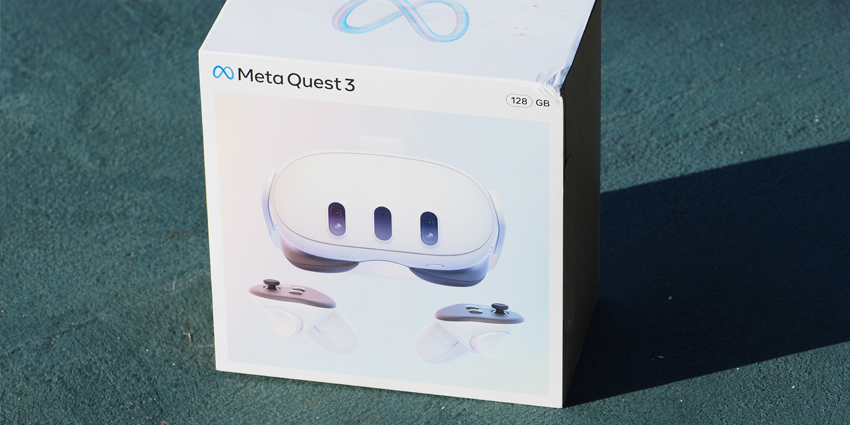The Apple Vision Pro is due later this week, and according to reports from “people familiar” with Meta and its operations, Mark Zuckerberg’s firm plans to become the Android competitor against Apple as the firm enters the XR world.
Much like smartphone users are generally pushed to choose between an iOS or Android device, some pundits believe that the headset market will reach the same point as Apple and other major firms invest in XR devices.
“Meta employees see the Quest and its software ecosystem emerging as a primary alternative to Apple in the space, filling the role played by Google’s Android in smartphones,” the report states.
With realityOS – the operating system powering the Vision Pro – already in the developer’s hands, Apple’s spatial computing vision already sees social media hype relating to productivity and entertainment usage, such as streaming media.
On the other hand, Android operating systems already have a cemented home in many XR headsets, namely Meta’s Quest lineup. So, what will prove the most fruitful in 2024? A new wave of spatial computing applications or a trusted Android framework.
Who will Become the XR Front Runner?
With all eyes on the Vision Pro, Meta is assumedly taking notes on how to secure itself as not only a rigid competitor but more so as the sole leader in the space – beating out an oncoming wave of new headsets from Apple, Google, Samsung, LG, and more.
The report, stemming from the Wall Street Journal, states that executives such as Zuckerberg are optimistic about Apple’s Vision Pro debut because it will validate their immersive industry goals – which Meta first kicked off at Connect 2022 – and therefore bring more customers to the space, potentially driving XR’s next mainstream moment.
Moreover, according to the report, the Vision Pro may “reinvigorate” Meta’s Metaverse campaign, “which consumers have yet to widely embrace.”
The report also states that the oncoming battle between Meta and Apple could overwhelmingly influence software makers. OS immersive application developers seemingly could help drive a chosen XR device forward by choosing to create on it, therefore driving adoption thanks to a lineup of services.
However, on the other hand, the report suggests that Meta may have been influenced by Apple more than it likes to admit. The report highlights how Meta turned away from its Metaverse concept to move towards MR applications – Meta even unveiled its Quest 3 MR headset just days before the first Vision Pro announcement.
More on Vision Pro
Apple has confirmed they will release their new MR headset on February 2nd, with preorders starting earlier this month on January 19th. The device will initially be available for purchase in the US only, both in-store and online, with availability in other regions to follow.
The Vision Pro will cost $3,499 for a 256GB storage model. Apple is also offering additional accessories at an additional cost to increase accessibility for those who require prescription glasses. Apple is working with ZEISS to bring optional optical inserts to the product, with “Readers” soon available for $99 and prescription standard optics for $149.
Additional accessories for the Vision Pro include the solo knit band, dual loop band, light seal, two light seal cushions, an Apple Vision Pro cover, polishing cloth, battery, USB-C charge cable, and USB-C power adapter. These accessories will ensure maximum comfort and usability for users.
The device also features a 2-hour battery life, an immersive camera for capturing spatial audio/photos/video for peer-to-peer sharing, iPhone/iPad/Mac synchronization, a light seal, a LiDAR scanner, and a TrueDepth camera. The device runs on a custom operating system, VisionOS, specifically designed for MR applications.
Upon release, Apple will also launch an accompanying App Store, allowing Vision Pro users to quickly download immersive solutions catering to productivity, peer-to-peer collaboration, and viewing reference material. The app store will contain over one million spatial applications which work alongside iOS and iPadOS products, allowing users to leverage the device alongside familiar Apple products.
The Vision Pro device also comes with a custom M2 Silicon chip and Apple’s purpose-built R1 graphics processor, both of which support MR applications. Apple has not used Qualcomm technology for these processors, unlike their Android competitors.
The device boasts a high-resolution, 23 million-pixel display across two micro-OLED lenses, as well as high-dynamic range (HDR) and wide colour gamut (WCG) outputs.
Vision Pro Preorders Sell Out
Apple has recently opened preorders for the upcoming Vision Pro MR headset, which, despite concerns over its high price point of $3,499, have sold out quickly, with roughly 180,000 models being sold to US online customers alone. Apple plans to release the device in stores and online next Friday, and they expect to ship around 500,000 devices by the end of the year.
While the initial preorders are likely from Apple and XR enthusiasts, it will be interesting to see if broader audiences show interest in the Vision Pro in the coming months. More enthusiast demographics may be waiting for the next wave of Vision Pro devices, with the device’s popularity tested after the first wave get their hands on the device.
Apple has not confirmed when the Vision Pro will be available in regions outside the US, but they may announce further details at WWDC later this year. CEO Tim Cook has called Vision Pro the most advanced consumer electronics device ever created and believes that the “era of spatial computing has arrived.”







